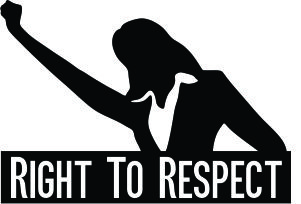Harassment or discrimination lawsuits can destroy a small business so it’s no surprise that many small business owners want to prevent harassment and discrimination from ever occurring.
Here are 3 simple ways small businesses, that have more than 15 employees, can prevent harassment and discrimination in the workplace.
Step 1:
Familiarize yourself with these definitions of harassment, sexual harassment, and discrimination, and retaliation as published on the U.S. Equal Employment Opportunity Commission (EEOC) website.
Harassment: “Harassment is unwelcome conduct that is based on race, color, religion, sex (including pregnancy), national origin, age (40 or older), disability or genetic information. Harassment becomes unlawful where 1) enduring the offensive conduct becomes a condition of continued employment, or 2) the conduct is severe or pervasive enough to create a work environment that a reasonable person would consider intimidating, hostile, or abusive.”
Sexual Harassment: “It is unlawful to harass a person (an applicant or employee) because of that person’s sex. Harassment can include “sexual harassment” or unwelcome sexual advances, requests for sexual favors, and other verbal or physical harassment of a sexual nature.”
Discrimination: “…it illegal to discriminate against a job applicant or an employee because of the person’s race, color, religion, sex (including pregnancy, gender identity, and sexual orientation), national origin, age (40 or older), disability or genetic information. It is also illegal to discriminate against a person because the person complained about discrimination, filed a charge of discrimination, or participated in an employment discrimination investigation or lawsuit.”
Retaliation: “The EEO laws prohibit punishing job applicants or employees for asserting their rights to be free from employment discrimination including harassment. Asserting these EEO rights is called “protected activity,” and it can take many forms.”
Step 2:
Understand these relevant federal laws:
- Title VII of the Civil Rights Act of 1964
- Titles I and V of the Americans with Disabilities Act
- The Equal Pay Act of 1963
- Pregnancy Discrimination Act
- The Genetic Information Nondiscrimination Act of 2008
- Age Discrimination in Employment Act of 1967
Take the time to also read about your state laws and learn about how to prevent harassment and discrimination in the workplace.
Step 3:
Take preventive steps to ensure that your employees are all aware of the laws and the company policies regarding harassment and discrimination in the workplace. Some examples of ways to do this include:
- Providing employees with the company policies.
- Providing yearly training on sexual harassment and discrimination.
- Creating simple and clear policies outlining how to file a complaint for harassment or discrimination in the workplace.
- Create procedures for conducting investigations into these complaints and have policies in place for how to deal with the issues if harassment or discrimination is found to have occurred.
Employers can be held liable for their employee’s actions. Employers must take preventative actions to avoid costly and time-consuming liability cases.
According to the EEOC, “The employer is automatically liable for harassment by a supervisor that results in a negative employment action such as termination, failure to promote or hire, and loss of wages. If the supervisor’s harassment results in a hostile work environment, the employer can avoid liability only if it can prove that: 1) it reasonably tried to prevent and promptly correct the harassing behavior; and 2) the employee unreasonably failed to take advantage of any preventive or corrective opportunities provided by the employer.
“The employer will be liable for harassment by non-supervisory employees or non-employees over whom it has control (e.g., independent contractors or customers on the premises), if it knew, or should have known about the harassment and failed to take prompt and appropriate corrective action.”
For more information about harassment and discrimination prevention in the workplace, send us a message.















Comments